
You'll only buy them once
We want you to have it all! Not only a stunning Pergo wooden floor, but one that will stick by you through thick and thin. A timeless, durable, and sustainable choice. Therefore, we’re slightly (probably very) obsessed with two words: maximise and minimise. They are actually connected, as one leads to the other. By maximising the use of every single tree, we minimise waste and our environmental impact. A no-brainer, in other words. Therefore, for instance, we craft different sized planks for you to choose from. And using anything other than wood recovered or sourced from sustainably managed forests in our hdf core would just be very weird to us. Because Pergo wooden floors must be beautiful, inside and out. Living up to the prestigious Nordic Swan Ecolabel they all bear.
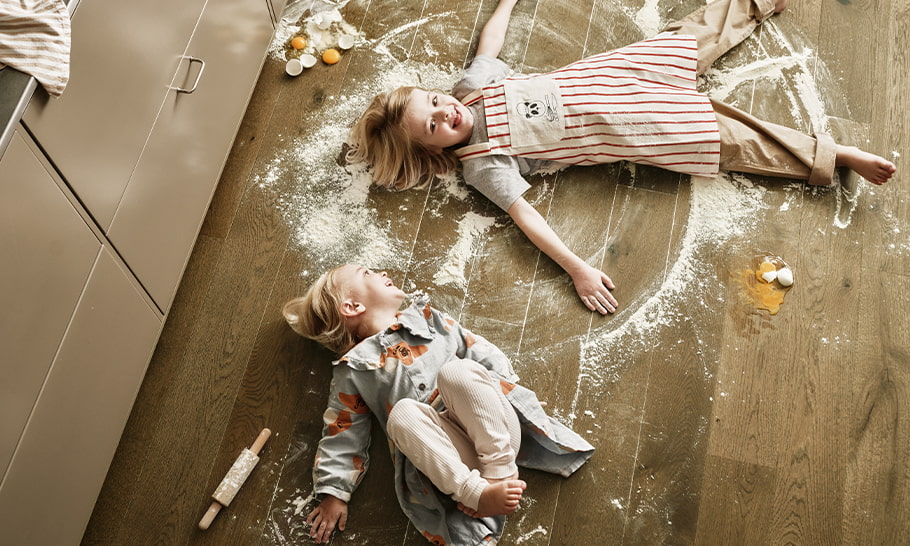
Made for kids and other hazards
Given that a product’s lifespan significantly affects its environmental impact, we’ve made sure your Pergo wooden floor is built to last. Our unique, patented StayClean and StayClean+ technology effectively protects your Pergo wooden floor against dirt, and the slayer of all wooden floors, liquids. This brilliant innovation will be there to support you on rainy days. Or when the kids try to bake a cake. Or in general when things go… not quite as planned. Whatever life brings, your Pergo wooden floor is ready for it. Ensuring you won’t have to get a new one for a lifetime. As brilliant for you as for Mother Earth.

Lifetime warranty
As if the incredible durability of a Pergo wooden floor wouldn’t be enough – each floor also comes with a lifetime warranty. Yes, that’s quite amazing. If all conditions are fulfilled, Pergo will still repair or replace the product after 30 years! We want you to rest assured that your Pergo floor will stand by you, no matter what life brings. While also reducing our environmental footprint, as the floor’s lifespan extends way beyond the ordinary. Directly contributing to less consumption and waste and paving the way to a more sustainable future.
Read more about our warranty conditions.
A story of wood
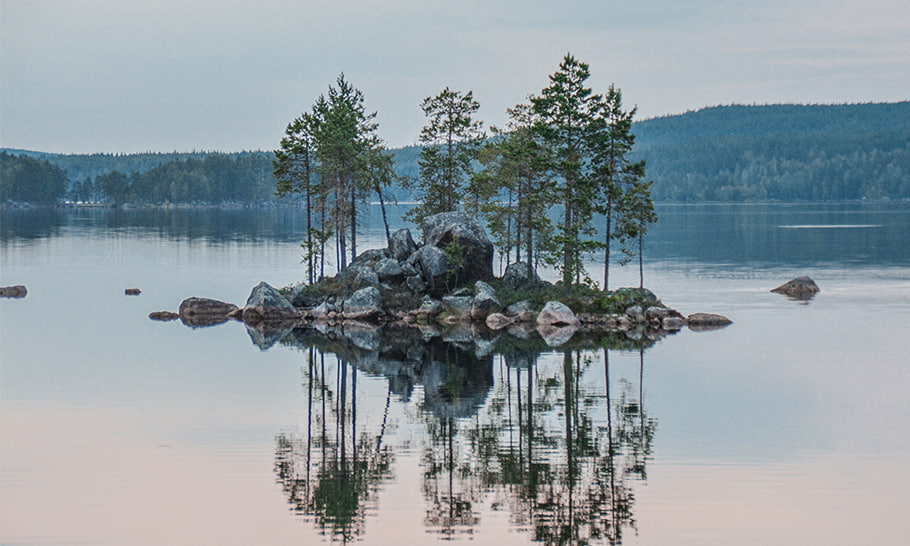
Wood you care?
(A pun never hurt anybody) If we told you that we optimise the use of every single tree, you probably would care, right? Because you don’t want a floor manufacturer that doesn’t care about respecting the environment. No matter how breathtakingly beautiful the floor is. Therefore, we produce various sizes of planks for you to choose from, both in terms of length and width. This allows us to minimise waste and use pretty much the whole tree. Our obsession with mitigating waste also extends into the production process itself. Each step is scrutinised like a treasure hunter in search of hidden gems – to minimise environmental impact and maximise the value extracted from our beloved wood.
Did you know trees can fight?
Trees are actually very good at fighting climate change as they are quite brilliant at absorbing CO2 and stimulating biodiversity. Trees are truly the best and should be treated as such, especially slow-growing trees such as oak. For this reason, we limit our use of these species and use them only in the top layers of our wooden floors.
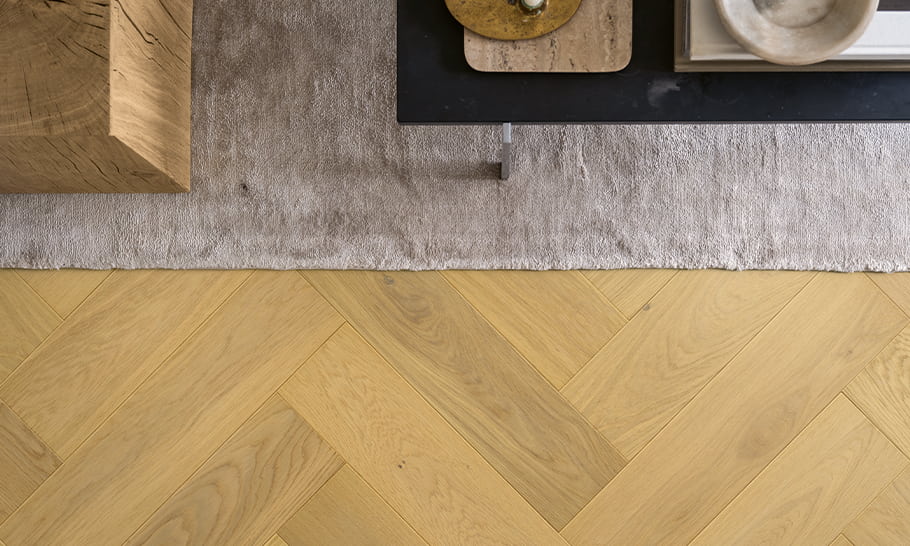
That good wood
When making the core of your Pergo wooden floors, we use either wood from fast-growing trees (Spruce or Hevea) or a high-density fibreboard (HDF) made of recovered wood. In other words, only good wood! The Hevea trees (rubberwood) we use are initially planted and used by other industries for latex tapping. After 25 years of service, they are usually harvested and incinerated, but not when we get our hands on them. Then they become an important part of your floor, which is a much better fate. The recovered wood waste used is gathered from sawmills and roadside maintenance, for example – and would otherwise just be thrown away. By doing this, we can limit our use of slow-growing trees and make the most of our sustainable options.
They say we're responsible
You shouldn’t blindly trust what companies say about themselves. Instead, listen to what others say about them. So, don’t take our word for it when we say that the wood used is responsibly sourced. But rather the word of the PEFC label that our Pergo Wood flooring proudly bears. This label is renowned as one of the top certifications for ethical sourcing, which is super important. When forests are cared for in a sustainable way, we ensure the ongoing benefits of this valuable asset. This certification guarantees that our wood comes from responsibly managed or regulated forests, protecting old-growth forests and stopping illegal logging, with a thorough risk assessment. As a result, you can be assured that our wood sourcing doesn’t harm the environment by contributing to deforestation.
Clean air is rather important
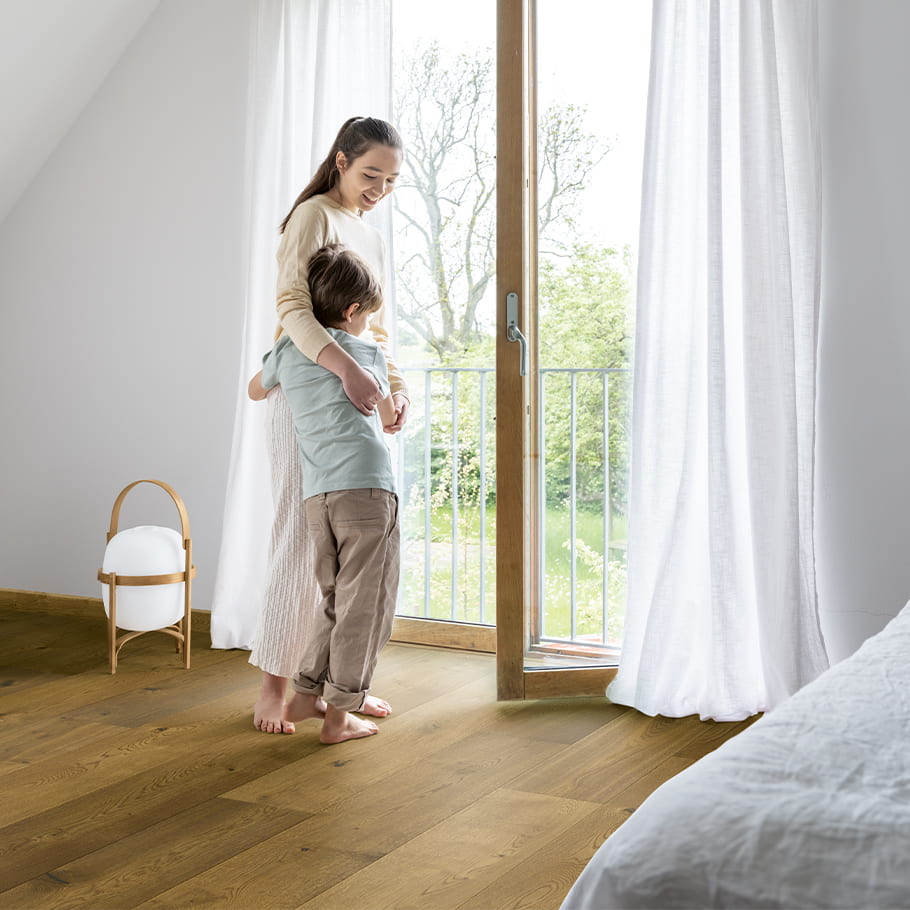
We'll keep you safe
Given the considerable time we spend within our homes, the indoor air quality is pretty important. How you ventilate, the cleaning products you use, and even the furniture you have, all affect the indoor environment in some way. So do the floors you put in. Because we produce our floors in-house, we know exactly what goes into them. This helps us control any bad stuff that might come out of them, such as VOCs (which stands for Volatile Organic Compounds). So, you can be totally sure that your beautiful floor is completely safe for you and your family.
Is there a better grade then A?
No, there isn’t. At least not when it comes to low VOC emissions. Volatile Organic Compounds possess a high vapour pressure at room temperature. This means they’re really good at turning into gas and spreading into the air, even when it’s not hot. One potential VOC in flooring is formaldehyde (we know, scary name). The formaldehyde emissions from our wooden flooring are even lower than the strict EU restrictions. This is reflected in our A label, a highly regarded emission regulation certificate. So, just relax and take a deep breath because we’ve got your back. Well, and your lungs.
Going for green energy
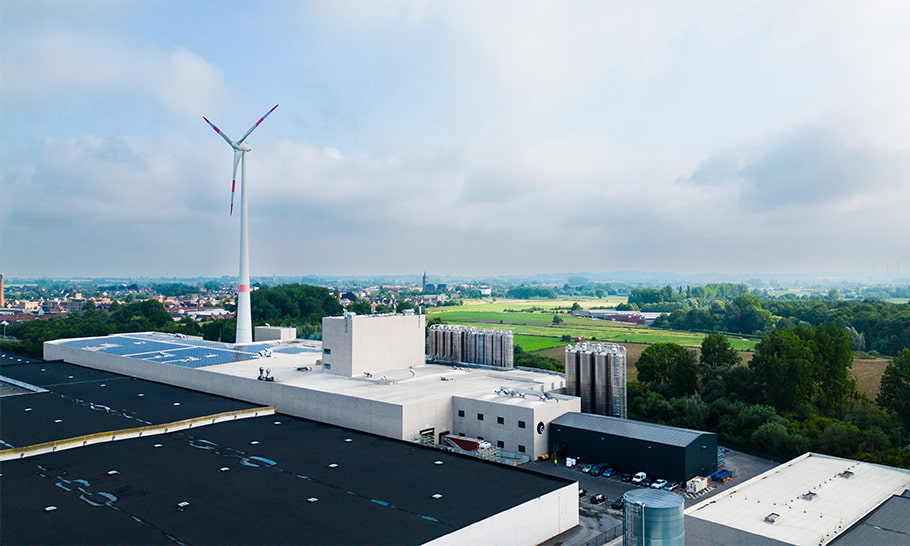
Waste goes in, power comes out
Creating green, environmentally friendly energy isn’t much more difficult than that. At least not in theory. In real life it’s about a zillion times more complicated. Which makes us very happy to tell you something pretty great. Approximately 80% of the energy needed for heating during the production of your Pergo wooden floor is generated from wood remnants and dust. Waste recycled from our production, and wood that has reached the end of its lifecycle. Rather than letting it go to waste, we use it when crafting your floor.
"Avoid" is a beautiful word
The UNILIN Group – the parent company of Pergo – has invested in two biomass plants to convert wood dust and non-recyclable wood waste into green energy. We then use this to fuel our production processes, when crafting your floor. We also harness energy from wind turbines and solar panels.
Are we there yet?
NO! Not by a longshot, and we’ll probably never be done, as there are always ways to improve. In our continuous effort to reduce our impact and be more environmentally conscious with our wooden flooring, we use a method called ‘lifecycle assessment’ (LCA). This helps us find ways to improve each product at every stage of its life. The results are summarised in an ‘environmental product declaration’ (EPD), which guides us on our path towards greater sustainability.
-
Nordic Ecolabel
-
PEFC
-
A
-
M1
-
EPD